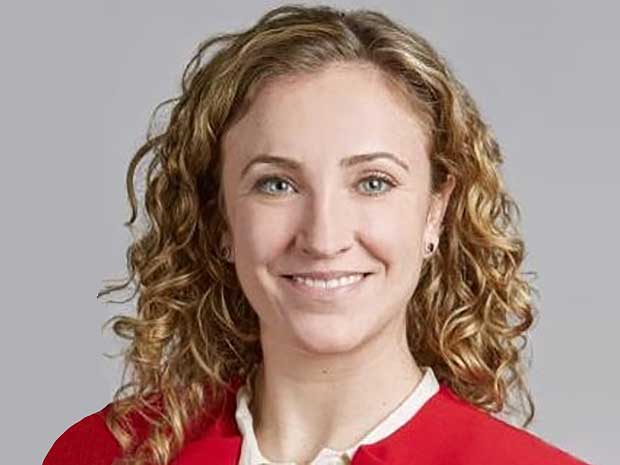Executive summary
On Dec. 14, 2023, the IRS and the Department of the Treasury released proposed regulations related to the advanced manufacturing production credit available under Internal Revenue Code section 45X (the section 45X credit). The credit is available for entities that produce and sell eligible components after Dec. 31, 2022, to unrelated taxpayers. The production and sale must be in a trade or business of the taxpayer. The proposed regulations define eligible components and provide standards to determine and document a component’s eligibility. Further, the guidance addresses the use of contract manufacturing.
Overview
The Inflation Reduction Act of 2022 added section 45X to the Internal Revenue Code to incentivize the domestic production of components and critical minerals (collectively or individually referred to as eligible components) used in energy projects, bolstering the domestic supply chain. In general, the section 45X credit is available to taxpayers that produce and sell eligible components to unrelated persons after Dec. 31, 2022. Eligible components include solar energy components, wind energy components, inverters, qualifying battery components and fifty critical minerals refined to certain purity standards.
Production of eligible components
Eligible components must be produced within the United States or a United States’ territory. However, constituent elements, materials and subcomponents used in the production of eligible components are not subject to this same requirement.
The proposed regulations define the term "produced by the taxpayer" for entities engaged in both primary and secondary production activities. Primary production activities involve producing eligible components using non-recycled input materials while secondary production activities involve producing eligible components using recycled materials. The taxpayer in a production process eligible for the section 45X credit is the entity that performs the actual production activities that bring about a substantial transformation resulting in the eligible component. The proposed regulations state that activities resulting in the partial transformation that do not result in a substantial transformation of inputs into a complete and distinct eligible component are excluded from the definition of "produced by the taxpayer." Entities engaged in production activities that involve minor assembly of constituent inputs or superficial modification of a final eligible component are also excluded from the definition of "produced by the taxpayer."
Contract manufacturing
The proposed regulations provide a framework for determining the party that is eligible for a section 45X credit in a contract manufacturing arrangement. Eligible components may be produced in whole or in part pursuant to contract manufacturing arrangements. In general, the party that performs the actual production activities that bring about a substantial transformation resulting in the eligible component and sells the eligible component to an unrelated person is eligible for a section 45X credit. The proposed regulations include a special rule that allow the parties to a contract manufacturing arrangement to elect which party may claim the section 45X credit, assuming the other requirements of such credit are met. Each party must agree and a certification statement must be submitted. The agreement must be entered into by the parties before the production of the eligible component to be delivered under the contract is completed.
Related person election
The section 45X credit requires that eligible components be sold to an "unrelated person". The statute includes an election that would allow a taxpayer to treat the sale of eligible components to a related person as a sale of eligible components to an unrelated person. The election is only available if the taxpayer sells the eligible component(s) to the related person. For example, transfers between entities that are disregarded for tax purposes may not be eligible for the election. The proposed regulations provide a framework for determining a taxpayer’s eligibility for the election. If eligible, taxpayers must make the election annually and include certain disclosures about the related person(s), the taxpayer’s trade or business, the eligible components and more.
Anti-abuse rule
The proposed regulations provide an anti-abuse rule that aims to curb credit claims that are inconsistent with the policy intent of the section 45X credit. In turn, the credit is not allowable if the primary purpose of the production and sale of an eligible component is to obtain the benefit of the section 45X credit in a manner that is wasteful, such as discarding, disposing of or destroying the eligible component without putting it to a productive use. Determinations with respect to the proposed anti-abuse rule would be based on facts and circumstances.
Applicability dates
The proposed regulations clarify that the completion of production of eligible components and the sale of such components must be completed after Dec. 31, 2022, to be eligible for the section 45X credit. The credit for the production and sale of eligible components except for critical minerals begins to phase out for eligible components sold after Dec. 31, 2029. For eligible components sold in 2030, 2031 and 2032, the phase out percentages are 75%, 50% and 25%, respectively. The credit amount for eligible components produced and sold by a taxpayer in 2030, 2031, and 2032 is equal to the amount of the credit determined multiplied by the applicable phase out percentage. The section 45X credit is not available for eligible components sold after Dec. 31, 2032. Notably, the production and sale of critical minerals is not subject to a phase out.
Comments to the proposed regulations are due by Feb. 13, 2024.
Washington National Tax takeaways
Developments in the proposed regulations provide clarity for taxpayers with a variety of fact patterns. Determining which party in a supply chain performs the activities that result in a substantial transformation of inputs into complete and distinct eligible components is critical for determining eligibility for the section 45X credit. While production of the eligible components must be completed in 2023 or later, production may have started prior to 2023. Taxpayers in contract manufacturing arrangements may want to evaluate their agreements and processes to determine eligibility for the section 45X credit. If a credit may be claimed, parties to the arrangement may want to consider their options in choosing the party that will claim the credit pursuant to a certification statement and agreement by all parties. Similarly, taxpayers using related parties for the production and sale of eligible components will want to review the related person election to evaluate the requirements implications for their ability to claim a credit.
Taxpayers applying for credit allocations through the section 48C program should consider the interactions between sections 48C and 45X. Claiming one of the two credits may have permanent consequences for the taxpayer’s eligibility for the other credit depending on the facts of the manufacturing facilities involved in either credit claim.
Taxpayers producing battery components or critical minerals destined for plug-in hybrid or electric vehicles should consider the critical mineral and battery component requirements under the section 30D clean vehicle credit. Domestic production and sale of these battery components and critical minerals may be eligible for the section 45X credit. See RSM’s coverage of recent guidance on the critical mineral and battery component requirements.




